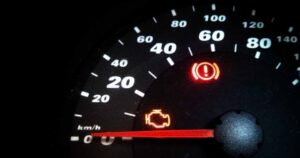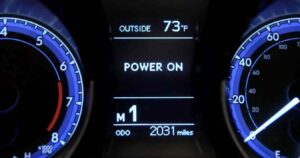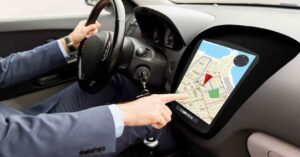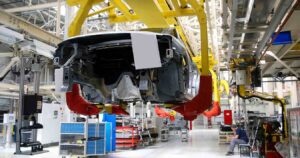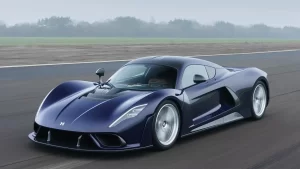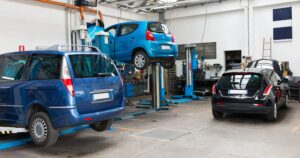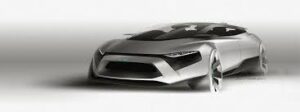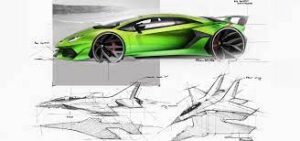Aerodynamics in Car Design: Aerodynamics is the study of how air interacts with solid objects as they move through the air. It is a branch of fluid dynamics, which is the study of how fluids (liquids and gases) behave and interact with objects in motion.
Aerodynamics is an important field of study in the design of aircraft, automobiles, and other vehicles that move through the air or other fluids. Engineers use the principles of aerodynamics to design vehicles that are efficient and stable in flight or while driving.
They also use aerodynamics to reduce drag, which is the resistance an object encounters as it moves through a fluid, and to increase lift, which is the upward force that opposes the weight of an object, allowing it to fly or float.
Table of Contents
ToggleRole of Aerodynamics
The role of aerodynamics is to understand and control the motion of air and other gases around an object, and how the object interacts with the surrounding fluid.
In practice, engineers use aerodynamics to optimize the performance and safety of a wide range of vehicles and structures. Some specific examples of the role of aerodynamics in different fields include:

Aerospace
Aerodynamics plays a crucial role in the design of aircraft, spacecraft, and missiles. Engineers use aerodynamics to design wings and other lift-generating surfaces that allow aircraft to fly, as well as to design fuselages and other parts of the aircraft that minimize drag and improve fuel efficiency.
They also use aerodynamics to design control surfaces, such as flaps and rudders, that allow pilots to control the aircraft’s motion.
Automotive
Aerodynamics plays an important role in the design of cars, trucks, and other ground vehicles. Engineers use aerodynamics to design bodies that minimize drag and improve fuel efficiency, as well as to design cooling and airflow systems that keep the vehicle’s engines and occupants cool.
They also use aerodynamics to design spoilers and other devices that improve the vehicle’s handling and stability at high speeds.
Sports equipment
Aerodynamics plays an important role in the design of sports equipment such as bicycles, racing boats, speed skates, and golf clubs. For example, in cycling, the aerodynamics of the bike and the rider are critical for achieving the best performance.
When designing sports equipment, engineers often focus on creating shapes and surfaces that reduce drag, which enables the athletes to move faster.
Industrial
Aerodynamics is also used in industrial settings to optimize the performance and safety of wind turbines and wind farms, as well as in the design of cooling systems for power plants, oil refineries, and other industrial facilities.
Engineers also use aerodynamics to design ventilation systems for buildings and other structures, to minimize drafts and improve energy efficiency.
Biomedical
Aerodynamics plays a role in the design of prosthetic limbs and other medical devices, such as artificial heart valves and blood pumps. Engineers use aerodynamics to design these devices so that they are efficient and easy to use and do not create dangerous blood clots or other problems.
Overall, aerodynamics is an interdisciplinary field that has applications in many areas, with the goal of understanding and controlling the motion of air and other fluids, to make the objects that move through them more efficient and safe.
Role of Aerodynamics in Car Design
Aerodynamics plays a significant role in the design of cars, trucks, and other ground vehicles. Engineers use aerodynamics to optimize the performance and fuel efficiency of the vehicle and to improve its handling and stability at high speeds.
One of the key ways that aerodynamics is used in car design is to minimize drag. Drag is the resistance that a vehicle encounters as it moves through the air, and it can have a big impact on the vehicle’s fuel efficiency and performance.
To minimize drag, engineers use computer simulations and wind tunnel testing to design vehicles that have smooth, streamlined shapes that allow the air to flow around the vehicle with minimal disruption.
This can include features such as a sloping windshield, a smooth underbody, and a rounded rear end. Engineers also use aerodynamics to design active and passive devices such as spoilers, air dams, and vortex generators, to create a balance of lift and drag that improves handling and stability.
Aerodynamics also plays a role in the design of the cooling system for a car engine. Engineers use aerodynamics to optimize the flow of air through the engine compartment, to keep the engine cool and running efficiently.
This can include designing grilles and air inlets that allow the maximum amount of air to flow into the engine compartment and designing ducts and vents that direct the air to the parts of the engine that need it most.
In addition, aerodynamics also plays an important role in designing the car’s exterior and internal lighting system, as well as the design of the windscreen and side windows. All these designs are aimed to improve the car’s stability and fuel efficiency, as well as the passengers’ comfort and safety.
In summary, Aerodynamics plays a critical role in the design of cars, trucks, and other ground vehicles, it allows engineers to optimize the vehicle’s aerodynamic performance, in terms of its fuel efficiency and high-speed stability, as well as the comfort and safety of the passengers and driver.
Effects on Car’s Performance and Fuel Efficiency
Aerodynamics plays a significant role in determining a car’s performance and fuel efficiency. The shape of a car and the way it interacts with the air can have a big impact on the amount of drag that the vehicle encounters as it moves down the road.
One of the main ways that aerodynamics affects car performance and fuel efficiency is through drag. As I explained before, drag is the resistance that a vehicle encounters as it moves through the air, and it can have a big impact on the vehicle’s performance and fuel efficiency.
The less drag a vehicle experiences, the less energy it needs to maintain a certain speed, and therefore, it consumes less fuel. Cars that are designed with smooth, streamlined shapes, and have a low drag coefficient, are more aerodynamic and require less energy to maintain a given speed than cars with more boxy, bluff shapes.
Another way that aerodynamics affects car performance and fuel efficiency is through lift. At high speeds, the airflow over the car’s body can create lift, which can cause the car to lose contact with the road surface.
To counter this, engineers use aerodynamics to design cars with a balance of lift and downforce, which helps to keep the car stable at high speeds and improve its handling. This is usually done by installing spoilers, wings, or diffusers, which help to increase downforce on the car, reducing lift and making the car more stable at high speeds.
In addition to these aerodynamic features, automakers also make use of active aerodynamic systems in high-performance cars.
These systems use mechanical or electronic actuators, to adjust elements such as front splitters, rear spoilers, or flaps, depending on the speed or the driving conditions, to optimize the aerodynamic performance of the car.
This can help to improve the car’s fuel efficiency at high speeds, as well as its performance in different driving conditions.
In summary, aerodynamics plays a crucial role in a car’s performance and fuel efficiency.
By minimizing drag, and achieving a balance of lift and downforce, engineers can design cars that are more aerodynamic and require less energy to maintain a given speed, which can help to improve fuel efficiency.
The use of active aerodynamic systems also allows the car to adapt its performance to different driving conditions, providing more stability and efficiency.
Tags: Aerodynamics in Car Design, Aerodynamics in Car Design, Aerodynamics in Car Design, Aerodynamics in Car Design, Aerodynamics in Car Design, Aerodynamics in Car Design, Aerodynamics in Car Design







